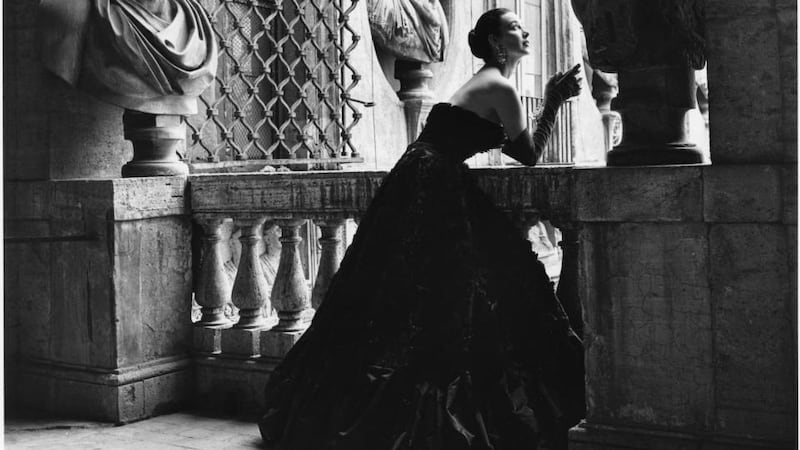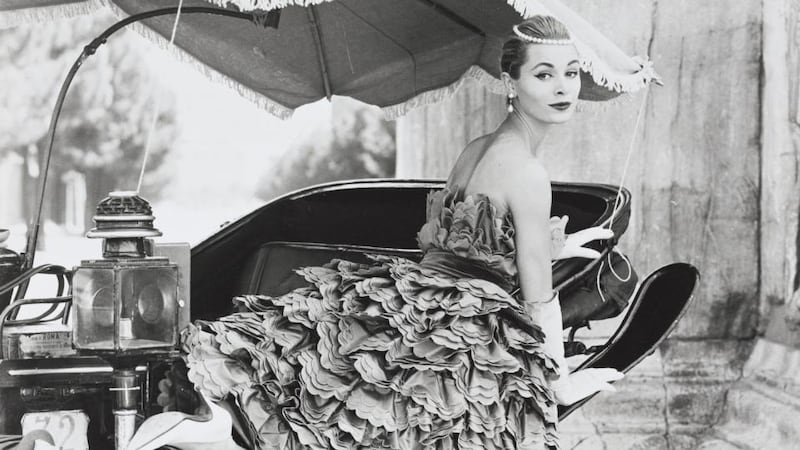There’s a photograph of a woman, head flung back, wearing a flamboyant white evening blouse, a black skirt and jewelled earrings and cufflinks. It is an advertisement for Gianfranco Ferre’s ready to wear collection 1991 and for Sonnet Stanfill that look sums up Italian glamour.
Stanfill, an American born into an Italian family, is the curator of the V & A’s current exhibition on postwar Italian fashion and the sense of the woman’s enjoyment and her beautiful attire are typical of a mood in Italian fashion, she argues, that informed the decades since the second World War.
“What sets Italy apart is a sense of ease and informality even when they are wearing dressed up clothes whereas Paris tends to be very formal”. There is no love of subversion unlike certain British sensibilities. “Italians don’t do punk, rebellion, rawness and edginess. There is always an instinct to dress well and classic good taste,” she says when we meet in London.


There are many breathtaking examples in the exhibition of Italian style from early Pucci print beach wear to Romeo Gigli’s lush velvet coats and Dolce & Gabbana’s exquisite dresses based on Sicilian mosaics not to speak of dreamy Valentino gowns, but what really stands out for their modernity are the pink silk palazzo pyjamas from the 1960s, a signature two piece designed by the aristocratic Irene Galitzine who combined sophistication with traditional artisan skills in her work and a lively social life. And an outstanding example of technical brilliance is a detailed paper maquette for a Fendi fur coat alongside the finished item in shaved and patchworked mink from 2000.
Surprisingly, the famous Italian designer Elsa Schiaparelli (who like Prada studied philosophy and whose “hard chic” mirrors that of Prada) whom many would rate more important than Chanel is not even mentioned in this show. Krizia’s trompe de l’oueil sweater shows her influence as does the zany “Yellow Pages” jacket of Moschino.
Why was she left out?
According to Stanfill “the emphasis and thrust of the exhibition was from 1945 to the present day and her period of influence was in the 1930s when she was in Paris and where she came into her own. She collaborated with artists like Dali and others - that was much more of a French than an Italian phenomenon”.
The exhibition tells the story of the remarkable rise of Italian fashion in the wake of the devastation of WW2 starting with a fashion show in Florence in 1950 that put Italian fashion on the map.
“I lived in Florence for a year studying art in the late 80s and I had been thinking about doing a show like this for five years. Given Italy’s many fashion venues there has never been a general exhibition on Italian fashion and there is no nationally funded museum of design in Italy (like the V & A )which is surprising given their contribution to design,” says Stanfill. (Her poetic name is courtesy of her mother, a retired English professor called Silver “and we have had a tradition of unusual names in the family”).
Some of the opening pieces are lavish ballgowns by Simonetta whose first collection using recycled dishcloths, gardening smocks and worker’s jackets because of a shortage of materials was an instant success. Italian ingenuity in the face of austerity and limited materials also informed Ferragamo’s celebrated use of raffia, cork and plastic for shoes and Gucci’s use of bamboo handles for bags. The emphasis on craftsmanship, heritage and the cachet of “Made in Italy” now face contemporary challenges in the face of Chinese competition, but according to Stanfill “Chinese are the future of Italian fashion in terms of consumption”.
For the visitor, there are plenty of gorgeous clothes such as the silver sequinned evening dress by Mila Schon worn by Lee Radziwill in 1966, extraordinary accessories, interesting video footage and interviews with industry leaders such as Italian Vogue’s Franca Sozzani, designer Margarita Missoni and tailor Mariano Rubinacci from Naples.
The Glamour of Italian Fashion, 1945-2014, supported by Bulgari and Nespresso, runs at the V&A until July 27th before travelling to the US.













